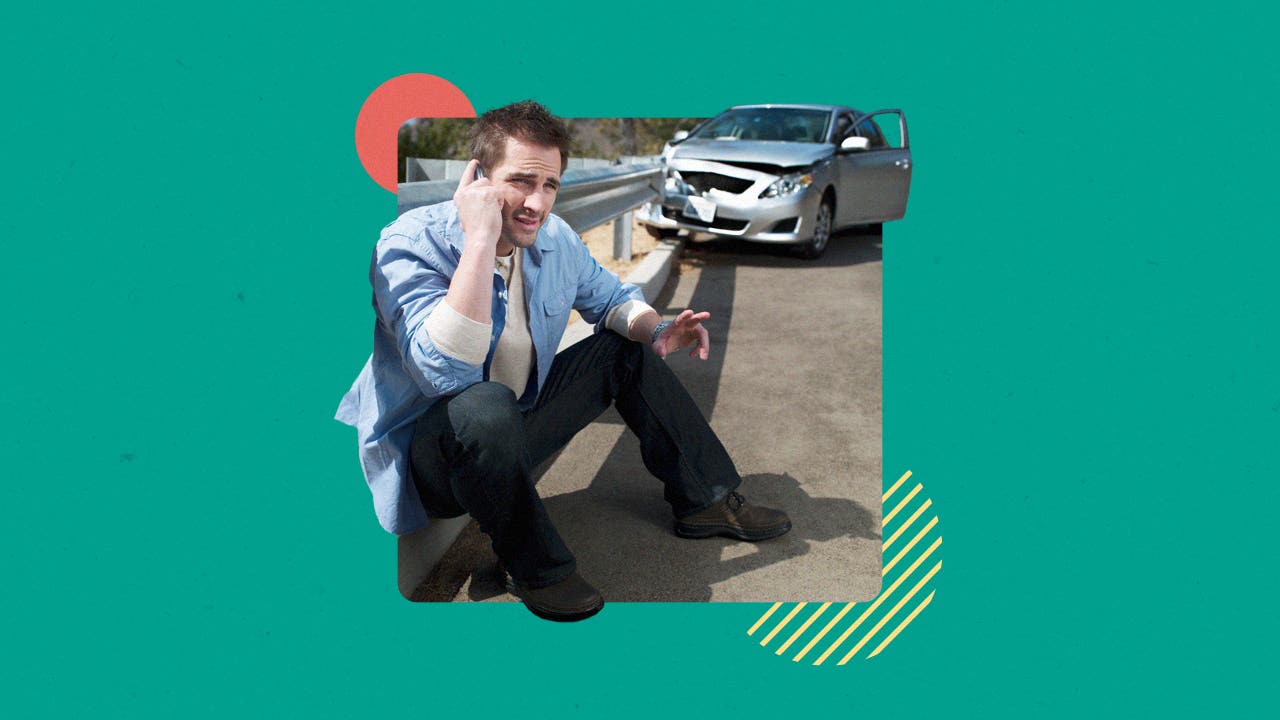More than 1 in 5 Americans have no emergency savings: how to ensure your auto insurance doesn’t leave you strapped in an emergency




If it’s been a while since you’ve thought about your car insurance policy, Bankrate’s findings on the state of Americans’ savings may inspire you to think about it again. It’s likely that your car insurance policy is a low-priority expense — after all, unlike groceries or gasoline, it’s something you (hopefully) rarely have to use. However, if you’re among the many Americans who are uncomfortable with the amount of emergency savings they have tucked away, your car insurance policy may be more beneficial to finance than you think.
Carrying the minimum amount of car insurance will likely get you a cheaper premium and save you in the short run, but you assume greater financial risk that could cost you more in the long run. If you find yourself in an accident, your minimum coverage policy might leave you in a financial lurch. With Americans’ emergency savings funds dwindling, taking time to reconsider your car insurance policy’s coverage levels could help provide some much-needed financial peace of mind.
Key takeaways
- More than 1 in 5 Americans have no emergency savings at all, according to Bankrate’s 2024 annual emergency savings report.
- Only 44 percent of U.S. adults are able to expense $1,000 or more in an emergency from their savings according to Bankrate’s survey.
- Reconsidering your car insurance policy’s coverage levels — whether that’s purchasing more coverage or raising the limits on what you already have — can act as a financial safety net if your savings account cannot.
- Minimum coverage insurance usually has a cheaper car insurance premium, but can leave you financially exposed after a car accident.
How do state minimums work?
In most states, all drivers are required to carry at least specific minimum amounts of car insurance in order to register their vehicles. The two notable exceptions are New Hampshire and, until July 1, 2024, Virginia. New Hampshire drivers are not required to carry auto insurance if they can show proof of financial responsibility, and Virginia drivers have the choice of paying a fee to the DMV in lieu of purchasing a policy. However, if drivers in either of those two states wish to purchase auto insurance, their policy must still comply with the state’s legal insurance minimum limits.
State minimum requirements vary, but they all contain some form of liability insurance. Liability insurance offers financial protection for the injuries you cause during an accident and the property you damage up to your policy’s limits. In the insurance world, these coverage types are referred to as bodily injury liability and property damage liability.
While liability insurance is an important part of any car insurance policy, it may not always be enough on its own. Liability insurance only helps with the damage you cause, but leaves a gap in terms of injury or vehicle damage you may experience. In no-fault states and a handful of others, part of your required insurance may include personal injury protection, or PIP, which can help with your and your passengers’ medical expenses.
What many people forget to consider is that compared to the cost of an accident, the state-mandated liability limits are low. Carrying a minimum coverage car insurance policy might offer you a cheaper premium, but at a larger financial risk. Carrying only a minimum coverage policy would leave you footing the bill for any damages in excess of your policy’s limits and for your car’s repairs. If you are determined at fault for a critical or fatal accident, you could be left responsible for paying several hundred thousand dollars in medical and legal expenses to the injured party. Most insurance professionals recommend purchasing liability coverage above the state minimums for greater financial protection.
Some drivers choose to purchase a full coverage car insurance policy, which includes both comprehensive and collision coverage in addition to the state minimums. Full coverage premiums are more expensive, but they offer broader financial protection.
How much do car accidents cost?
2021 data from the National Safety Council estimates that the average cost of a car accident with property damage only (no physical injuries or medical expenses) is about $5,700 per vehicle. While this amount may very well be covered by a minimum coverage car insurance policy, the price balloons when you begin to factor in medical bills. An accident with evident injuries sends the cost soaring up to $40,000, per the NSC.
Expectedly, the more serious the injuries are, the more expensive the accident will be. Accidents with a disabling injury cost an average of $155,000, and those that result in a death push costs up to seven-figure territory. If you live in a state where the minimum for bodily injury liability caps at $50,000 (a common limit in most states) and only carry minimum coverage, this could leave you with $100,000 plus in excess damages to cover out of pocket.
Injuries are only a portion of an accident’s full potential costs though, so without full coverage, you could be more on the hook. Research from the Insurance Information Institute (Triple-I) shows that in 2022, collision claims were the most frequent across the board, with 4.9 percent of policyholders with collision coverage filing a claim. Collision coverage pays for the repairs to your vehicle if you were found at fault for the accident. Considering that the average cost of a collision claim was $5,992 in 2022 according to the Triple-I, this means drivers with just a state minimum policy may need to pay nearly $6,000 out of pocket in that scenario. This is several thousand dollars more than most Americans are able to expense from their savings in an emergency, according to Bankrate’s research.
Comprehensive claims were also expensive in 2022. Comprehensive coverage, like collision, is not a part of state minimum insurance. It provides protection for a suite of disasters outside of your control like vehicle theft, weather damage, theft, animal collisions, vandalism and other perils. Triple-I reports that about 3.3 percent of comprehensive coverage holders filed a claim, and average claims cost $2,738. Again, for drivers with minimum coverage, the repair costs would need to be paid out of pocket without aid from your insurance company.
Furthermore, you could still be left paying for your accident for years to come even after all of your insurance claims and outstanding bills are squared away. Car insurance rates are, at their core, an evaluation of risk. Insurers view drivers who were found at fault for accidents in the past as more likely to cause another accident again in the future, which almost always makes car insurance after an at-fault accident more expensive. Bankrate’s research found that, on average, minimum coverage insurance costs increased by 41 percent after an at-fault accident.
Are emergency savings a reliable source of personal insurance?
Tapping into your rainy day savings to cover out-of-pocket expenses after an accident is extremely risky. In a Bankrate survey, only 44 percent of respondents said that they could afford a $1,000 emergency expense from their savings. Although this is a slight improvement from last year’s 43 percent, it paints a dubious portrait of the reliability of emergency funds in place of adequate insurance coverage. The same survey showed that only one in five households were able to add to their emergency savings since the beginning of last year. Worse yet, 2 in 3 Americans would be worried about having sufficient savings to cover a month’s worth of living expenses if they were to lose their job.
You may not have thousands of dollars in your savings account to finance a car repair or medical bill after an accident, but an insurance company does. If your — like so many others’ — savings account is looking lean, making sure you have enough car insurance could provide some much-needed financial security. Think about it this way: if you only have $5,000 in property damage liability, but cause $10,000 in damage after an accident, you’d be on the hook for the remaining $5,000. Or, if you’re the victim of a vehicle break-in with just the state minimum coverage, you’d need to front those repair bills on your own. Having an adequate amount of coverage — although it comes at an expense — can provide critical financial aid in the event of the unexpected.
How much does car insurance cost?
Like many things, car insurance is getting more expensive in 2024. The average annual cost of a full coverage car insurance policy in 2024 is $2,543 (or $212 per month), a jump of $529 from the year before. Minimum coverage wasn’t spared, either, with costs rising from $622 in 2023 to $740 per year (or $62 per month) in 2024.
Bankrate’s True Cost of Auto Insurance report found that in 2023, Americans spent around 3.41 percent of their income on car insurance, which, while not exceedingly significant, is still more than 2022’s 2.9 percent. While car insurance may not make up a huge part of your budgeting plan, it still stings to see a higher premium on your policy renewal. It can be tempting to scale back your coverage, especially when your budget is tight, but that may be exactly the time to consider a higher coverage level. If making the jump from a minimum coverage to a full coverage policy is too much of a financial burden, consider raising your liability coverage limits. Upping your liability limits from the state minimums has a much smaller impact on your premium, according to Bankrate’s research.
What to review on your auto insurance policy
You don’t need to dig too far into the weeds in order to get a gist of your auto policy; we’d suggest starting off by looking at the declarations page. The declarations page is a handy summary of the pertinent information about your auto insurance policy. It includes information about the coverage types you have, your coverage limits, deductibles, the names of the covered drivers in your household, which vehicles are insured and claims filing information.
You typically receive the declarations, or “dec,” page once you purchase your policy. If your insurer has an online portal or mobile app, you’ll likely be able to download it there. Keep in mind though that you don’t have to review your policy entirely on your own. Setting up some time to speak with a licensed insurance agent can also help you navigate your policy and identify any potential gaps in coverage as well as coverage that may be redundant for your situation. Here’s what to keep an eye out for on your dec page:
- Coverage level: Your declarations page will show whether your vehicle is insured at full or minimum coverage.
- Coverage limits: A coverage limit is the maximum amount of money your insurance provider can provide for specific types of claims. You’ll typically see your liability coverage limits expressed as three numbers separated by a slash, such as 15/30/5. The first two numbers are the amount of bodily injury liability you have per person and per accident, and the last one is for property damage liability, in thousands.
- Deductible: Your deductible is the amount you are financially responsible for in a covered claim for optional collision or comprehensive coverage (which each have separate deductibles). If your insurance company is sending you a check for your auto repairs, it will typically have your deductible taken out. Deductibles usually range from $250 to $2,000 and in general, a higher deductible equates to a lower premium. Deductibles do not apply to liability coverage.
- Policy endorsements: Endorsements are add-on coverage you can purchase from your insurer. For example, you could add roadside assistance or key replacement to your car insurance for added peace of mind.
- Discounts: If you have any discounts on your policy, you will typically see them listed on the declarations page.
Knowing when to review your policy can be just as important. It can be beneficial to look it over with a licensed agent before your renewal date. A lot can change in a year or six months: if you live in a state where your credit-based insurance score affects your premium, perhaps you’ve taken steps to boost your credit. Or, maybe you have a new vehicle that qualifies for more discounts with your insurer.
Reviewing your auto policy may not be a blast, but if your savings account balance has you worried, having enough car insurance can act as a valuable — and relatively affordable — financial safety net for emergencies.
Frequently asked questions
-
-
Exactly how much you should have in an emergency fund will depend on your circumstances, but most experts recommend having emergency savings to finance three to six months of expenses. Understandably, building up a dependable savings account takes time, so it helps to open a high-interest savings account to get the most financial reward for the money you set aside. While you should aim to build up a reliable financial safety net through your savings account, an emergency fund should not be used as a replacement for adequate auto insurance coverage.
-
To choose the best car insurance company, you’ll first need to decide what you need from an insurance provider. Do you have young teens about to get their driver’s licenses? If so, an insurer that offers multiple discounts for teen or student drivers might be a good fit. Are you someone who prefers to handle everything online? Maybe an insurer with a highly-rated mobile app and other digital tools is best for you. Or, if you’d rather talk with an insurance agent face-to-face, looking for providers with offices near you can be a great start. Once you know what you need from your insurer, you’ll need to do some research (but Bankrate can help with that). You can start by evaluating some of the larger insurance companies, which are available in most states, or look into regional carriers. Be sure to keep third-party ratings in mind, as they are strong indicators of a company’s financial strength and customer service. When you have a shortlist of companies you’re interested in, you can begin collecting quotes. Comparing car insurance quotes is a crucial step in making sure that you are getting a fair price for your policy.
-
You can find an affordable car insurer the same way you’ll find any good car insurance provider: research and gathering quotes. Each insurance provider has its own method for assigning your rate; the quote you get from one provider could be drastically different from another. For instance, say you have a speeding ticket on your motor vehicle record. One insurer may quote you a higher price because of it, while another may offer a more favorable rate. Casting a wide net in terms of insurance quotes can help you find an affordable premium that matches your coverage needs and budget.
-
Contrary to popular belief, there are many instances when it may be more beneficial in the long run to pay for damages on your own versus filing a claim with your insurance provider. First, consider your insurance deductible. Let’s say you scratch your front bumper getting your car into your garage and a repair shop quotes you $200 for the damage. If your deductible is $500, it may make more sense to pay the $200 to the repair shop directly instead of filing a claim since the damage is less than your deductible. Additionally, filling a claim typically leads to a premium surcharge, which may be wiser to avoid by paying out of pocket if the damage is insignificant compared to your deductible. On the other hand, if the damage is expensive, working with your insurance company by filing a claim can help reduce your financial burden.
-
You may also like




